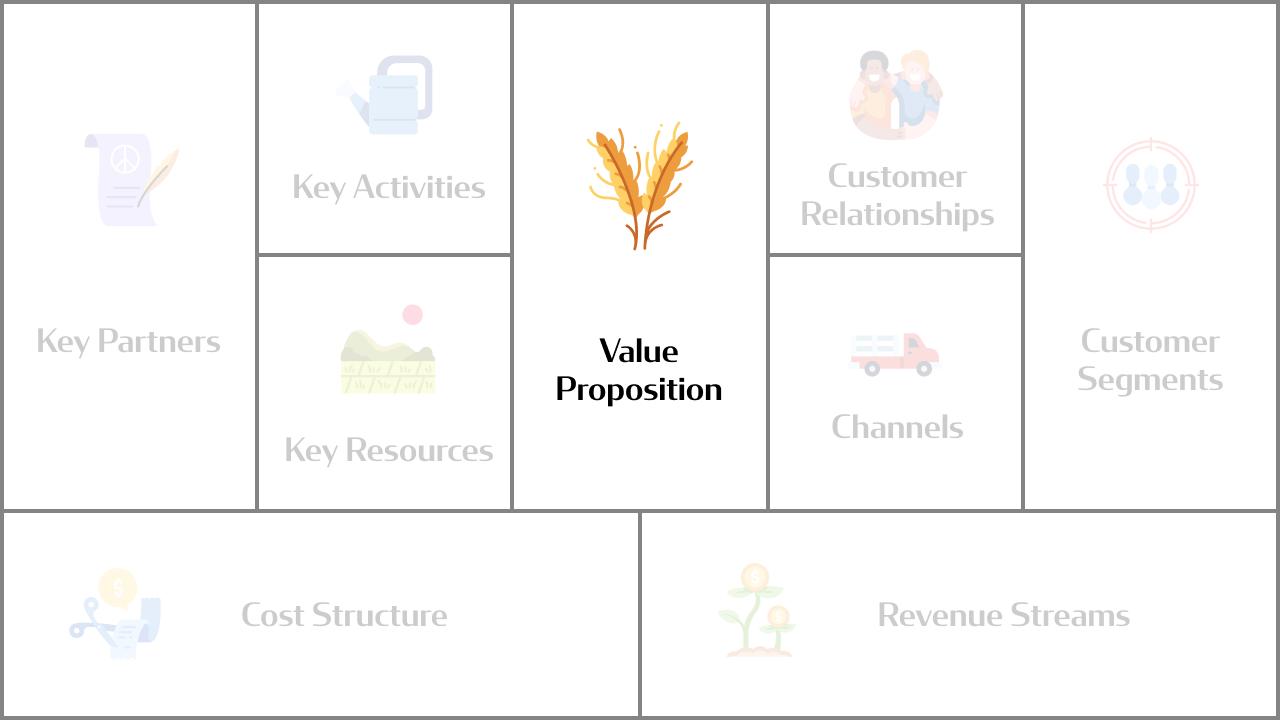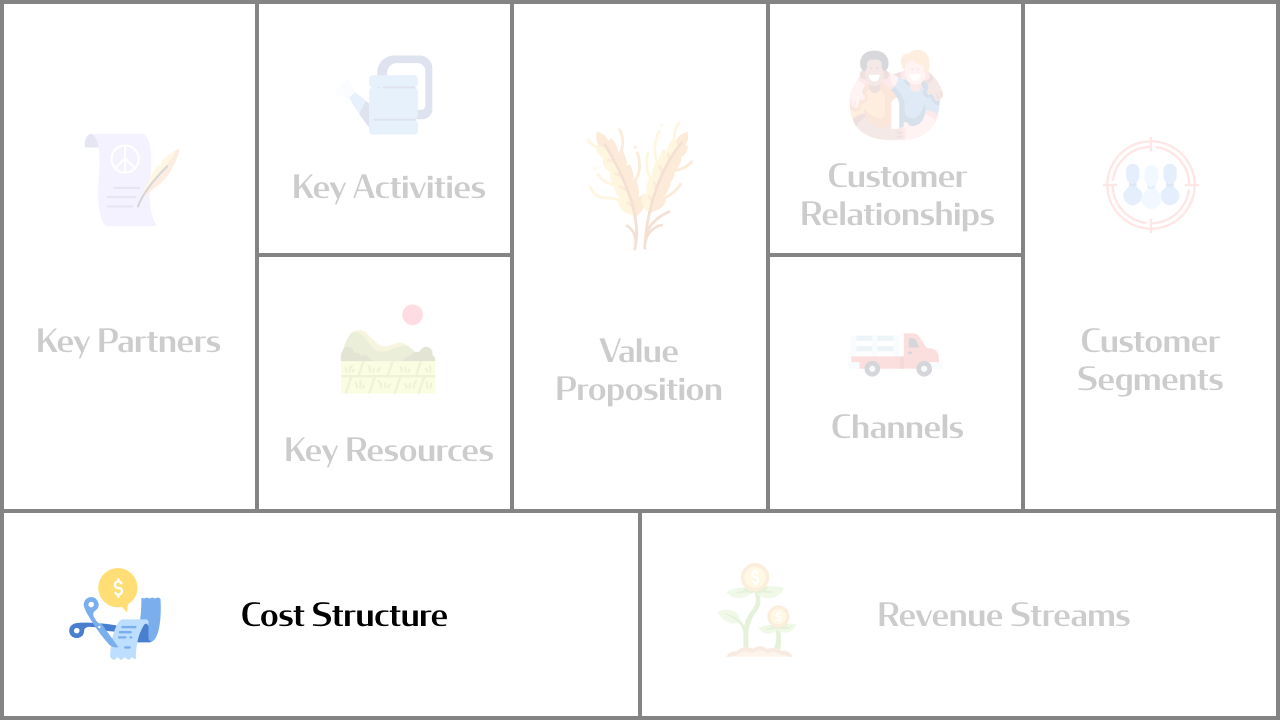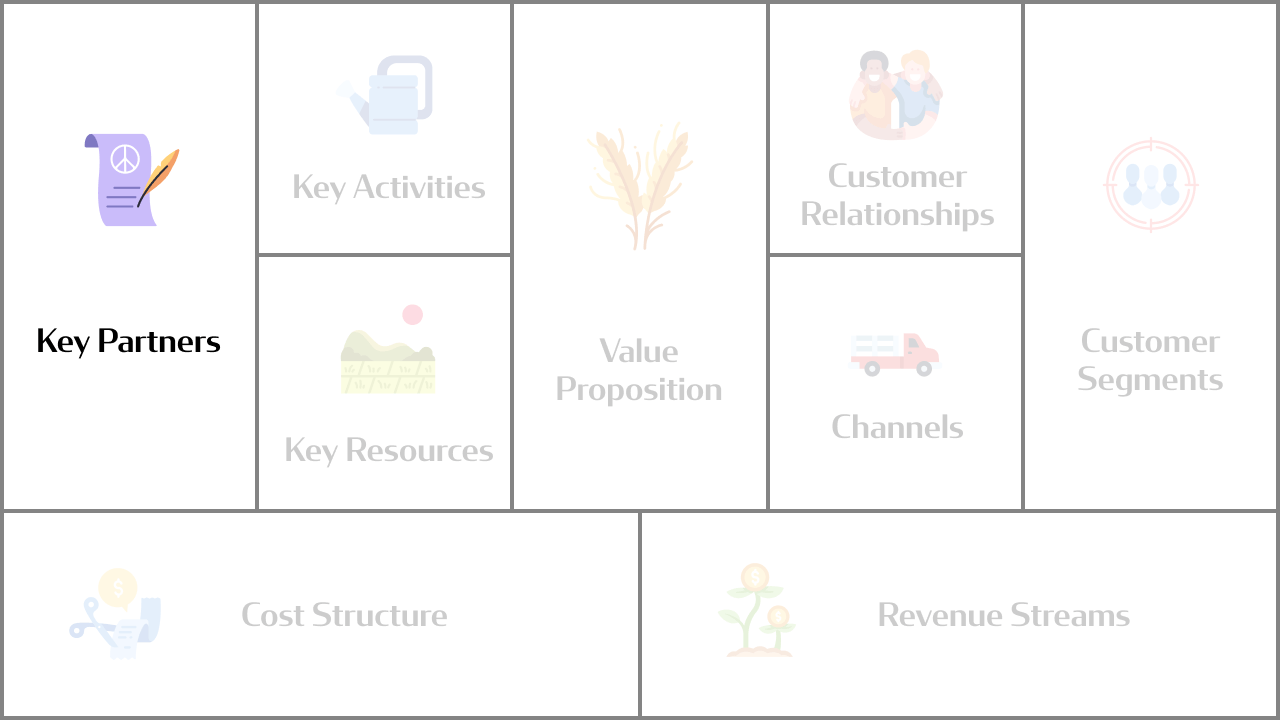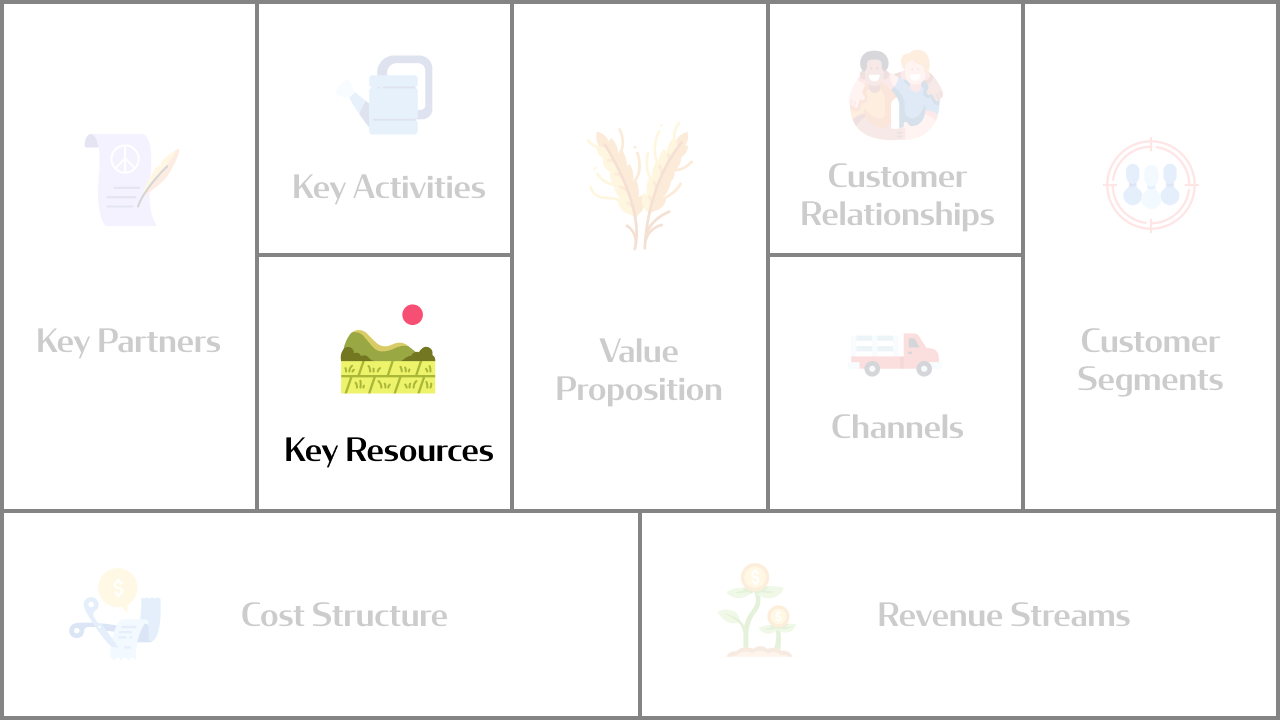The Business Model Canvas is an essential strategic management tool. It visualizes the big picture of the current and future business. Most profitable business models have one thing in common, a business canvas model with a clear and concise value proposition.
There are nine categories on the business canvas model. Today, we will focus on the first one: value proposition.

What is Value Proposition?
A value proposition is foundational to any business/product. It is a promise by a company to their target customer or market segment that they will always get a specific value from purchasing their products or services.
Simply put, a value proposition is a reason that compels customers to buy a product or engage in the business’s services. So every profitable business has to solve a particular problem for the targeted consumer market.
If your company has no clear value proposition two things can happen, either customers won’t buy your products or you might struggle to find the right people to buy. Especially since customers give value to a unique product or business that solves their problem or relieves their pain. Customers are inclined to part with their money if your business addresses these issues.
What Makes a Good Value Proposition?
So what makes a good value proposition?
Since the purpose is to communicate a message to the target market, a value proposition should clearly explain how a product solves a problem or fills a need. It should also communicate the specific benefit the business provides to the consumer and give reasons why it’s better than similar products on the market.
In other words, the value proposition must demonstrate what the brand has to offer a customer that no other competitor has. Take Uber, for example; when it first launched in San Francisco in 2010, the public and private (taxi) transport system failed to cater to the demand.
There were a lot of modern working individuals in the big city who was having a hard time finding reliable transport. It was pretty common to order or hail a cab that never arrived. Uber then came in with an efficient system that guaranteed a pick-up for the busy professional.
This gave Uber a significant competitive advantage over the taxi industry. The success of Uber is based on many things, including a great value proposition. The company demonstrated that it had something to offer that no other competitor had. The service was fulfilling a need that no one else was able to at the time.
Learn more about Uber’s Business Model Canvas evolution
(perfect place for a second example)
Another example is Spotify, while the idea of an online music sharing platform wasn’t new (Apple iTunes had launched something similar in 2001), the way Spotify was approaching it was.
Apple iTunes model of online music sharing required the customer to pay to listen to music. The issue was, piracy was rampant and many people could get music online for free, so there was no real need to pay for music.
On the other hand, pirated music wasn’t always the best. There was no way to guarantee the sound quality of pirated tracks; in fact, most pirated songs had terrible audio quality and took long to download.
Spotify came in and offered the best of both worlds. They were offering customers an extensive library of high-quality audio instantly and legally. The aim was to make the experience of using Spotify so good that people would feel compelled to pay for access instead of downloading the music for free. And it worked.
How To Create A Good Value Proposition?
So how do you go about defining your business or product to create a good value proposition? The first thing is to realize that this process has to be done before launch. Most start-ups nowadays fixate on the idea and immediately run with it instead of exploring how the idea would be accepted by the customer.
If you want to avoid this common problem, there are a few questions you should ask to help you figure out if your idea is feasible. Take a look at our examples below:
- What problem does the product or service aim to solve?
- Why would someone want to have this problem solved?
- What is the underlying motivator for this problem?
- What bundles of services and products are you offering to each customer segment?
- What are the benefits, derived from features of your products or services?
Types of Value Propositions
The following elements can contribute to customer value creation:
- Newness
Some value propositions are created when a product or service is new. They satisfy a set of needs that the customer previously didn’t perceive because there was no similar offering.
Newness is common in technology-intensive products. Cell phones, for example, were not mainstream. Still, once the technology became widely available, a whole new industry around mobile telecommunication blossomed. A great example is Google’s search engine system which launched in 1999. The accuracy of the search results produced by Google attracted more people who could now get the answers they needed at a faster rate compared to competitors like Yahoo.
- Performance
Improving a product or service has been the hallmark of many product offerings over the years. Most industries have achieved longevity by launching improved performance versions of the same products. The PC and mobile industries have relied on better performance to bring more products onto the market.
However, improved performance has its limits. For example, faster machines, better graphics, and more disk storage space have failed to produce corresponding growth in customer demand in the PC and mobile phone industry.
- Customization
Customers today are attracted by-products that promote self-expression and individualism. In recent years the idea that a product should be an extension of the customer’s personality has gained particular importance in designing new services and products.
The mass customization and customer co-creation approach allows for customized products and services while still taking advantage of economies of scale. Nike, for example, allows its customers to customize their shoes through NikeID on their website. You can go online and create a completely original design.
- “Getting the job done.”
Value can be created by a product that assists customers in reaching the end goal. A good example is how Rolls-Royce gets the job done through the jet engines they manufacture and service for Boeing and provides financing through leasing.
This arrangement allows Rolls-Royce’s customers to focus on running their airlines. In exchange, the airlines pay Rolls-Royce a fee for every hour an engine runs.
- Design
A product can stand out because of its superior design. This is pretty common in the fashion and consumer electronics industries. Nike for example launched the Tiger Cortez sports shoe in 1965. The shoe stood out because it provided more support for runners, helping them to perform better. It’s no wonder that the shoe quickly sold out among the target market.
- Brand/status
Design and brand/status can be used interchangeably because their value creation is quite similar. Consumers can show loyalty to a brand because of its design. They can also show loyalty to a design because of the perceived brand status.
Having the latest Apple iPhone signifies a certain level of wealth or social status, for example.
- Price
Price is a typical value proposition element. Many companies enter a market offering a product or service at a lower price than the existing options.
Remember that low-price Value Propositions have important implications for the rest of a business model. There has to be a way to sustain the business if pricing is the value proposition you are going for.
- Cost reduction
Products and services geared towards enhancing customer experience by reducing cost are essential to creating value. IKEA, for example, catering to the post-WWII Swedish families that could not afford new furniture due to the 41% increase in prices from other furniture makers in the country.
- Risk reduction
Less risk usually results in the customer deriving more value from the product or service. For instance, when Amazon came onto the scene, people were skeptical about buying books online. But Amazon proved that their service was reliable; thus, their customers derive value from it.
- Accessibility
Ensuring that products and services are available to customers who previously lacked access is another way to create value. Variations in business models and innovative technologies have led to previously sub-serviced customers having access to certain services and products.
For instance, when Ford Motor Company released the Model N in 1906, the goal was to give the average American a chance to own and enjoy a car. This privilege had been previously reserved for the upper and upper-middle class only
- Convenience
Convenience is king these days, and the continuous growth of Amazon is proof of this. Providing consumers with a product or service that increases convenience is a strong value proposition. Many companies, including Amazon, have built empires around the value created by convenience.








